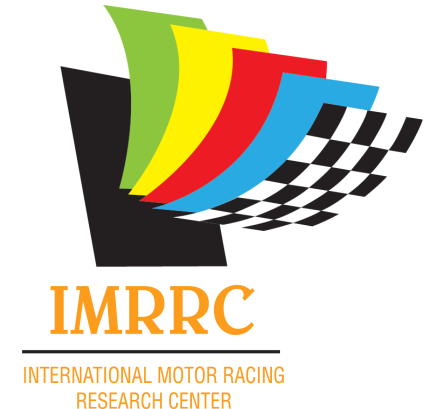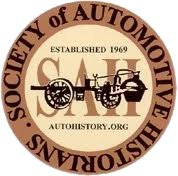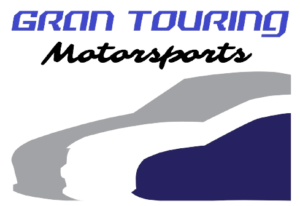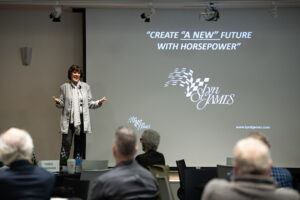We invite you to attend the ninth annual Michael R. Argetsinger Symposium on International Motor Racing History on Friday and Saturday, November 21 and 22, 2025 at our new location in the Harbor Hotel in Watkins Glen, NY. LEARN MORE.
A Virtual Celebration of Racing History
The International Motor Racing Research Center and the Society of Automotive Historians are pleased to announce a Virtual Symposium on International Motor Racing History, providing an on-line platform for presentations on all aspects of motor racing history.
The growing interest in the Michael R. Argetsinger Symposium on International Motor Racing History has created a need for two separate events. The established in-person symposium, which has moved to a new venue, the Harbor Hotel on Seneca Lake, has a limited number of presentation slots that are filled every year. To expand participation opportunities, we invite authors, motorsport scholars, enthusiast historians and students to share their areas of historical interest with the motorsport community by means of the new Virtual Symposium on International Motor Racing History.
Pre-recording provides maximum flexibility for presenters:
- Any motorsport topic, from general interest to the narrowest of niches, is invited.
- Presentations can be made for up to 60 minutes.
- Students to seasoned researchers are encouraged to submit presentation proposals.
Throughout the year, The Motoring Podcast Network (part of Gran Touring Motorsports) will post YouTube videos of the pre-recorded presentations on this webpage, for year-round public viewing.
Potential presenters are invited to submit proposal abstracts, not exceeding 200 words, by completing and submitting the ABSTRACT SUBMITTAL FORM below.
- Abstracts should summarize the content and argument of the proposed presentation in a succinct and compelling manner and should include representative graphic images that will be used as visual accompaniments to the presentation. An estimate of elapsed time for the presentation should be included.
- Abstracts are to be submitted using the fill-in form (below).
- Submission of an abstract does not guarantee selection for the Virtual Symposium.
- If selected, the presenter then provides a PowerPoint slideshow, including a draft of the accompanying text, for final approval. PowerPoint compilation assistance for the final slideshow may be available on request.
- Upon acceptance, you will record your presentation via Zoom with an SAH or IMRRC symposium administrator.
- Presenters are responsible for providing proper credit and/or permission for images used in a presentation.
- Each completed presentation recording will be converted to a YouTube video and posted to this page of the IMRRC website, for public viewing
DISCLAIMER: Please note that by registering for this event, you consent to have your presentation and its content distributed in the public domain, ie: YouTube, Podcasts, etc. Additionally, pre-recorded presentations may be eligible for print publication in the SAH Automotive History Review or the SAH Journal, and/or in the Journal of Motorsport Culture & History.
Abstract Submittal Form
"*" indicates required fields
For additional information, please contact Symposium Administrators: Duke Argetsinger of the IMRRC and Robert Barr of the SAH.
Previous Presentations
Click on the YEAR tabs below, then select and click on any thumbnail to begin playing the individual video presentations from each speaker.
All of the production, recording, live-stream, post-production, technology support, editing and podcasting work for the IMRRC Symposium starting in 2022 has been provided by the team at The Motoring Podcast Network (a division of GTM). Proud members of the IMRRC & the SAH and contribute volunteer time and resources to help grow the success of this conference. Please consider supporting their work via Patreon.
Thank YOU for your support!
We would like to thank our sponsors and volunteers for the continued support of the Annual Argetsinger Symposium. If you’d like to contribute to the success of this event, please don’t hesitate to reach out to research@racingarchives.org for more information.
The IMRRC, in conjunction with the Society of Automotive Historians, will soon be launching a Virtual Symposium on International Motor Racing History that will provide an on-line platform for presentations on aspects of motor racing history by authors, academic motorsport scholars, enthusiast historians, and students who wish to present their research and findings to the motorsport community. This initiative is designed to provide a broader reach for those who wish to participate in our mission to share and preserve the history of motorsports. It is a separate but complementary adjunct to the IMRRC’s Michael R. Argetsinger Symposium on International Motor Racing History which is held annually in Watkins Glen and for which 2025 presentation slots are no longer available.
Our partner Gran Touring Motorsports will post YouTube videos of the pre-recorded Virtual Symposium presentations on a separate page of the IMRRC website, as well as on their own social media platform, for year-round viewing. A wide range of motorsport topics are welcome, from subjects of general interest to the narrowest of niches and all serious candidates, from students to seasoned researchers are encouraged to submit presentation proposals. An announcement of the Virtual Symposium, explaining the process and requirements for potential presenters to submit abstracts of their proposed talks, will be provided soon on the IMRRC website and social media outlets.
Pre-recorded presentations may be eligible for print publication in the SAH Automotive History Review or the SAH Journal, and/or in the Journal of Motorsport Culture & History
Two-Day Event Provides Insights into the History of Motorsports

Presenter Quinn Beekwilder discusses the current state of motorsport research with Symposium cofounder Don Capps.
The Eighth Annual Michael R. Argetsinger Symposium on International Motor Racing History was held on November 1 and 2 at the Media Center at Watkins Glen International. Hosted jointly by the International Motor Racing Research Center and the Society of Automotive Historians, with support from WGI and the Watkins Glen Area Chamber of Commerce, the Symposium provides a forum for motor racing scholars, journalists and writers of motor racing history to present their research findings and share projects with each other and racing enthusiasts, both in person and through live-streaming of the event. Topics are wide-ranging, and the well attended, two-day event included topics such as “Perspectives on Motorsport Journalism, 1952-1972,” presented by faculty from McPherson College; “The Best Year of Our Lives – the Rebirth of Postwar European Motorsports,” presented by Professor Elton G. McGoun of Bucknell University; and “Studebaker at Indianapolis,” presented by Andrew Beckman, Archivist at the Studebaker National Museum. In all, experts and avid enthusiasts of motor racing history gave 19 additional talks.
8th Annual – 2024 Live-Stream Presentations
From Powder Puff to W Series: The Evolution of Women-Only Racing
to women. Consequently, it has been necessary for female racers to develop unique strategies to enter what has long existed as an exclusive ...masculine enclave. While entry can be facilitated through a familial relationship with a male driver, women without such connections often get their start through participation in women-only racing events. Although these races have provided women with the opportunity to enter the track, they have not been without controversy. Detractors argue that women will not be considered legitimate racers unless they compete on the same track as men. Proponents view women-only racing not only as a way to attract more women into the sport, but also as an important source of skill development, support, and community building.
This paper investigates the evolution of women-only racing, from its early introduction as a media stunt, to its current incarnation as a proving ground for serious female open-wheel racers. Informed by archival resources and motorsport scholarship, it considers how women-only racing complicates, facilitates, and liberates women’s entry, participation, and recognition in the masculine world of motorsports.
This livestream was presented via twitch.tv/grantouringmotorsports and produced by The Motoring Podcast Network - learn more at https://www.motoringpodcast.netShow More










FULL LENGTH RECORDINGS: DAY 1, DAY 2
WATKINS GLEN, N.Y. (Oct. 11, 2022) – The International Motor Racing Research Center (IMRRC), in partnership with the Society of Automotive Historians (SAH), will present the Sixth Annual Michael R. Argetsinger Symposium on International Motor Racing History.
This academic symposium will be held on Friday, Nov. 4 and Saturday, Nov. 5, in the Media Center at the Watkins Glen International race track. The IMRRC will host a reception, sponsored by the Watkins Glen Area Chamber of Commerce, at the Research Center at 610 South Decatur Street in Watkins Glen on Friday from 6:00 to 8:00 p.m. All events are free and open to the public, who are welcome to attend any or all sessions. This year’s Symposium will be live-streamed thanks to the generous assistance of Gran Touring Motorsports. A detailed schedule, presenter bios, descriptions of presentations, and a link to the live stream are available at racingarchives.org.
The two-day program will feature a keynote address, “Moonshine and Its Connection to the American Auto Industry,” by Buz McKim, renowned NASCAR historian, on Saturday afternoon. Friday’s schedule includes a panel discussion hosted by Dr. Michael Stocz of the University of New Hampshire and other scholars on motorsports and its intricate
relationship to the media. A related presentation on Formula One and the media, “F1: From Circus to Media Spectacle” will be made by noted historian James Miller of Hampshire College. A unique perspective on motorsports will be offered by Mark Howell, Professor of Communications at Northwestern Michigan College, who will explore the connections between musicians and motorsports in his presentation “Living Loud and Living Fast.” Friday’s topics will include a presentation on lessons learned in teaching motorsports history by Professor Trey Cunningham, Chair of the Department of Sport and Motorsport Management at Belmont Abbey College. In addition to the keynote address, Saturday’s schedule features a morning presentation by Gordon Eliot White, oval track expert and author of authoritative works on Miller and Offenhauser race cars, on “Harry Miller: The Man and the Cars.” The afternoon session will feature “Fifty Years After Title IX – On and Off the Track: A Roundtable on Women in Motorsports,” moderated by Dr. Daniel J. Simone of the New
York Historical Society Museum and Library, formerly curator of the NASCAR Hall of Fame. A broad range of other aspects of motorsports history and culture will be explored in the two-day event by scholars from around the world, including presentations by experts from Australia, Italy, Belgium and the United Kingdom.
The annual symposium began in 2015 and is named in honor of the late Michael R. Argetsinger, an award-winning motorsports author and longtime member of the IMRRC’s Governing Council. He was also a competitive driver for nearly 45 years, competing in more than 400 races at 54 different circuits in seven countries. Michael was the son of Jean and Cameron Argetsinger, who revived motor racing in the United States following World War II.
About The International Society of Automotive Historians (SAH)
The International Society of Automotive Historians encourages research into any aspect of automotive history. The SAH actively supports the compilation and preservation of papers, organizational records, print ephemera and images to safeguard, broaden and deepen the understanding of motorized, wheeled land transportation through the modern age and into the future. For more information about the SAH, visit autohistory.org.
About the International Motor Racing Research Center (IMRRC)
Located in one of the premier racing towns in America, the IMRRC’s collection spans continents, eras, and race series, embodying the speed, drama and camaraderie of amateur and professional motor racing throughout the world. The Center welcomes serious researchers and casual fans alike to share stories of race drivers, race series, and race cars captured on its shelves and walls and brought to life through exhibitions and special events. The IMRRC is free and open to the public, no appointment necessary, Monday-Friday, 9 a.m.-5 p.m. More at racingarchives.org.
Download the Full Press Release.
WATKINS GLEN, N.Y. (Oct. 31, 2019) – The International Motor Racing Research Center (IMRRC), in partnership with the Society of Automotive Historians and the Popular Culture Association’s Vehicle Culture Area, will present The Cultural Turn Meets the First Turn: Writing Motorsports History at the fifth annual Michael R. Argetsinger Symposium on International Motor Racing History.
This academic symposium will be held on Nov. 8-9 in the Media Center at the Watkins Glen International race track. The IMRRC will host a reception at the Research Center at 610 South Decatur Street in Watkins Glen on Friday from 6:00 to 8:00 p.m. A detailed schedule for the weekend may be found at racingarchives.org. All events are free and open to the public, who are welcome to attend any or all sessions. The two-day program will feature a keynote address, Writing Motorsports History, by Dr. John Heitmann, Professor Emeritus at the University of Dayton on Saturday afternoon. Friday’s schedule includes three panels whose topics include an examination of the legacy of Juan Manuel Fangio; the exploits and real life of Britain’s first Speed Queen, Dorothy Levitt; and a consideration of the challenges encountered in presenting racing history to various generations, among others.
Saturday’s schedule includes the keynote address as well as two panels and a roundtable discussion entitled, Looking Forward: Writing about Motor Sports History and Culture, moderated by Col. H. Donald Capps, chair of the Society of Automotive Historians International Motor Sports History Section and member of the IMRRC Historian’s Council; and Dr. Pat Yongue, Professor Emeritus of English at the University of Houston, an expert on women in racing and a member of the Society of Automotive Historians International Motor Sports History Section.
Saturday’s panel topics will include the relationship between NASA and motorsports; moonshine and its relationship with the American auto industry; and a look at motorsports’ intricate and symbiotic relationship with media broadcasting, among others.
The annual symposium began in 2015 and was originally named in honor of Jean S. Argetsinger, a founder of the IMRRC. In 2017, Jean asked that the symposium be renamed for son Michael, an award-winning motorsports author and longtime member of the IMRRC’s Governing Council, who died in 2015.
The International Society of Automotive Historians encourages research into any aspect of automotive history. The SAH actively supports the compilation and preservation of papers, organizational records, print ephemera and images to safeguard, broaden and deepen the understanding of motorized, wheeled land transportation through the modern age and into the future. For more information about the SAH, visit autohistory.org.
The Popular Culture Association is a group of scholars and enthusiasts who study popular culture, writing, sharing and publishing in the field in a diverse array of subject areas, including vehicle culture. The mission of the International Motor Racing Research Center is to collect, preserve and share the global history of motorsports with all racing fans from the casual spectator to the serious researcher. Visitors are welcomed to the Center to see the On the Grid display car, browse the library, enjoy displays from the collection and watch 25
Years at Speed: The Watkins Glen Story with Brock Yates, a film on the early history of racing at the Glen in the Center’s theater. The staff is on hand to share their passion for motorsports with all racing enthusiasts. Admission is free and open to the public Monday through Friday from 9:00 a.m. to 5:00 p.m. at 610 South Decatur Street in Watkins Glen.















